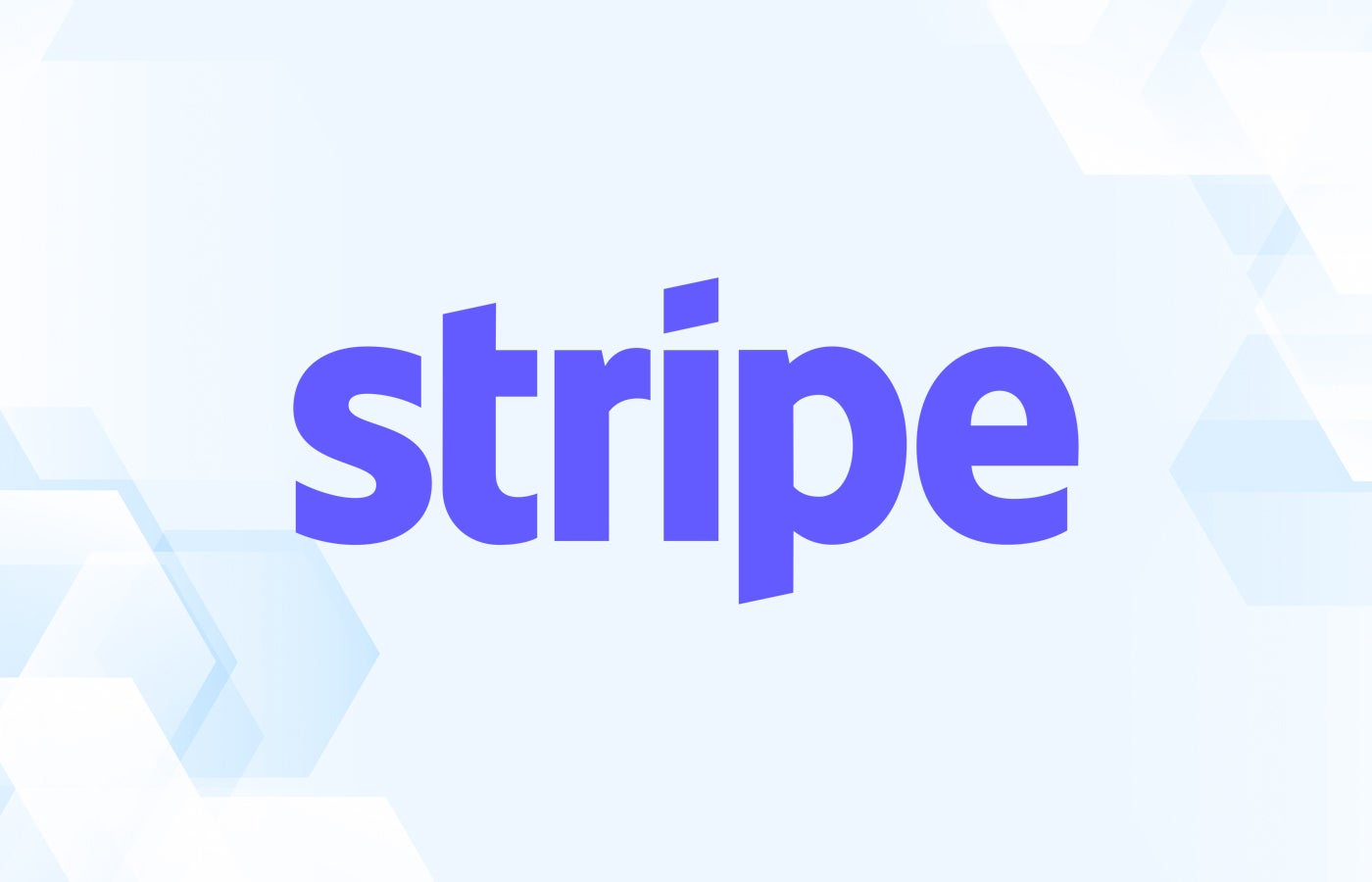Stripe fast factsOur rating: 4.59 out of 5 Starting price: $0 per user per month Key features:
|

Stripe is a payment processing platform designed to handle everything from simple online transactions to complex payment flows. It offers powerful APIs, extensive integration options, and advanced security features that make it a top choice for developers and tech-savvy businesses. I like that it has a comprehensive set of tools that make it a suitable processor for small businesses, and, at the same time, provide scalability and customizability for mid- to large-sized businesses.
In my Stripe review, I leveraged my years of order and payment processing to test Stripe’s system first-hand, comparing its tools and pricing, to help you decide if it is right for your business.
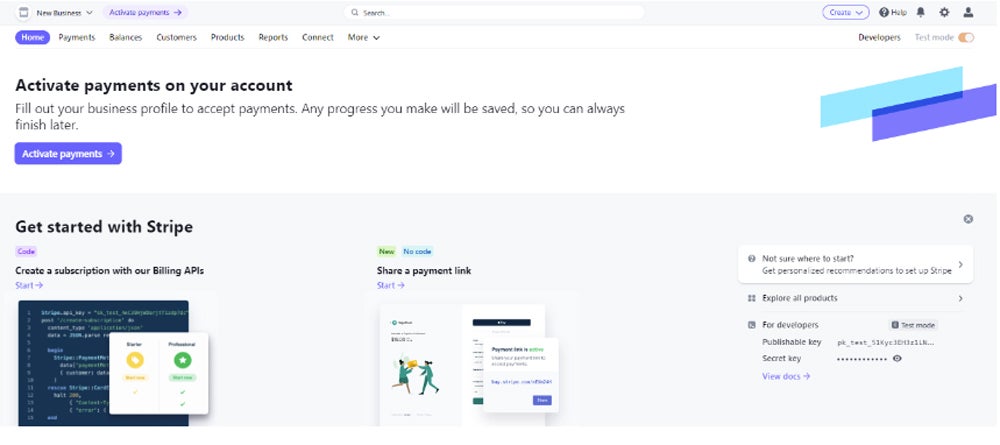
Stripe pricing
Any business can sign up for a Stripe account and instantly start accepting payments. It uses a flat-rate pricing structure, with potential volume discounts and/or interchange-plus pricing for businesses that have high monthly transaction volume. I like that Stripe’s pricing structure is transparent, yet offers flexibility as you grow.
- Monthly fee: $0 per month.
- Card processing fee: 2.9% + $0.30 per transaction.
- Manually-entered: +0.5% per transaction.
- International cards: +1.5% per transaction.
- Currency conversion: +1% per transaction.
- In-person card processing via Stripe Terminal: 2.7% + $0.05 per transaction.
- Tap to Pay transactions: + $0.10 per transaction.
- ACH payment processing fee: 0.8%, capped at $5 per transaction.
- Instant payout: 1.5%, minimum of $0.50 per payout.
- Chargeback fee: $15 per chargeback.
- Stripe Billing: 0.7% of billing volume.
- Stripe Invoicing: 0.4% per paid invoice.
Stripe hardware
Although Stripe is best known for its online payment solutions, it also offers in-person payment capabilities. Stripe has card readers businesses can purchase for in-store transactions, as well as tap-to-pay functionality on mobile devices. These options make it easy for businesses to accept payments in physical locations, complementing Stripe’s robust online platform.
While I think the best way to maximize Stripe’s capabilities is still with custom builds, Stripe now has more options for no-code point-of-sale solutions. Since Stripe Terminal’s launch in 2018, it has increased the number of no-code off-the-shelf solutions.
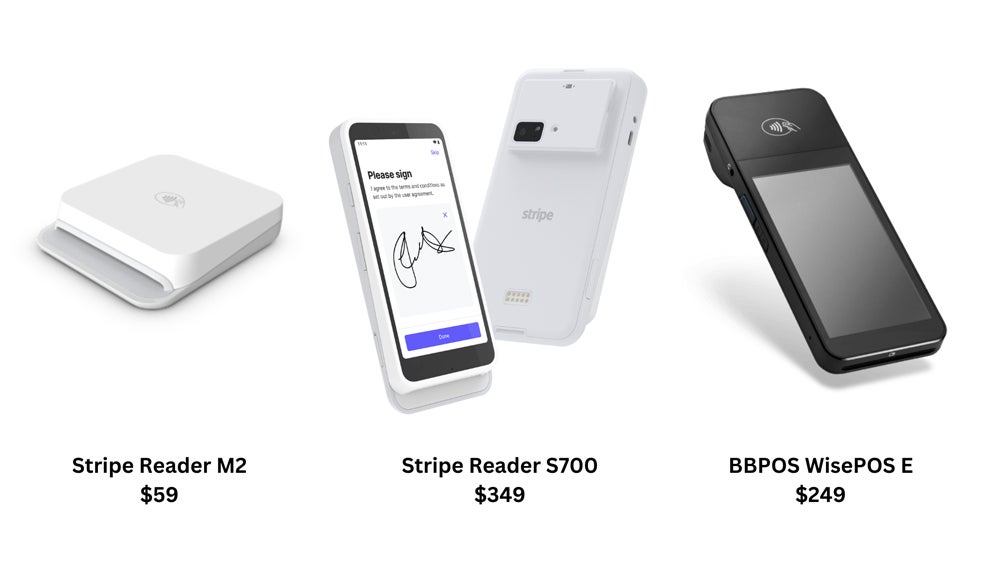
Businesses may also use Stripe’s Tap-to-Pay feature to accept contactless in-person payments through the Stripe Dashboard without any additional hardware. The only requirements are a compatible mobile device and Stripe Terminal integration.
Stripe key features
Stripe is widely known for its versatile payment processing solutions. Its powerful API and feature-rich platform make it a go-to for businesses and developers looking to build customizable and scalable payment systems. Here are some of my favorite key features that set Stripe apart from its competitors:
Comprehensive API and developer tools
Stripe’s API is one of the most flexible in the payment industry. Although it allows developers to integrate payment processing seamlessly into their applications, I find it can be a bit daunting for businesses that lack some technical know-how and prefer an out-of-the-box solution. For businesses that are looking for customizability and versatility, Stripe’s extensive documentation and developer support make it easy to build custom payment solutions to suit specific needs.
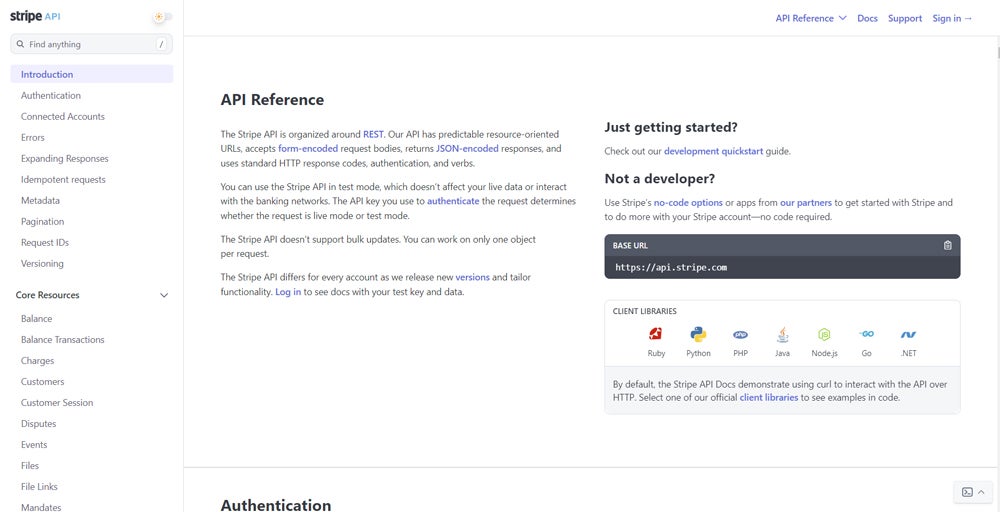
Global payment support
Stripe supports payments in over 135 currencies, 46 countries, and various payment methods, including credit cards, ACH, and even cryptocurrencies. This makes it ideal for businesses with an international customer base, providing a seamless payment experience across borders.
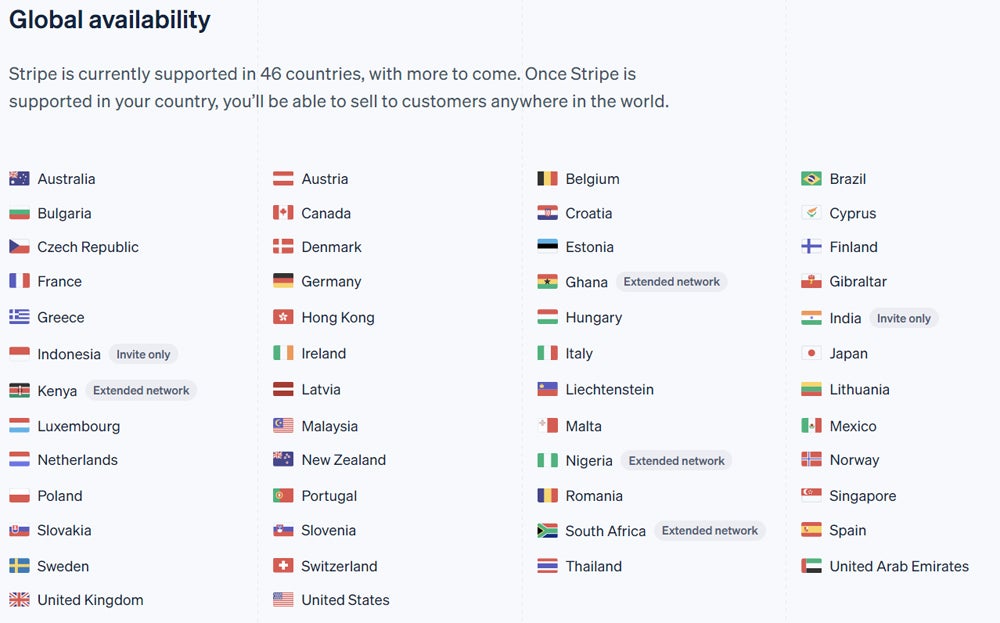
Advanced fraud detection
Stripe has a machine learning-based fraud detection and prevention system called Radar, which adapts to evolving threats in real-time. It helps reduce chargebacks and unauthorized transactions. This ensures businesses can operate securely with less manual intervention for fraud management.
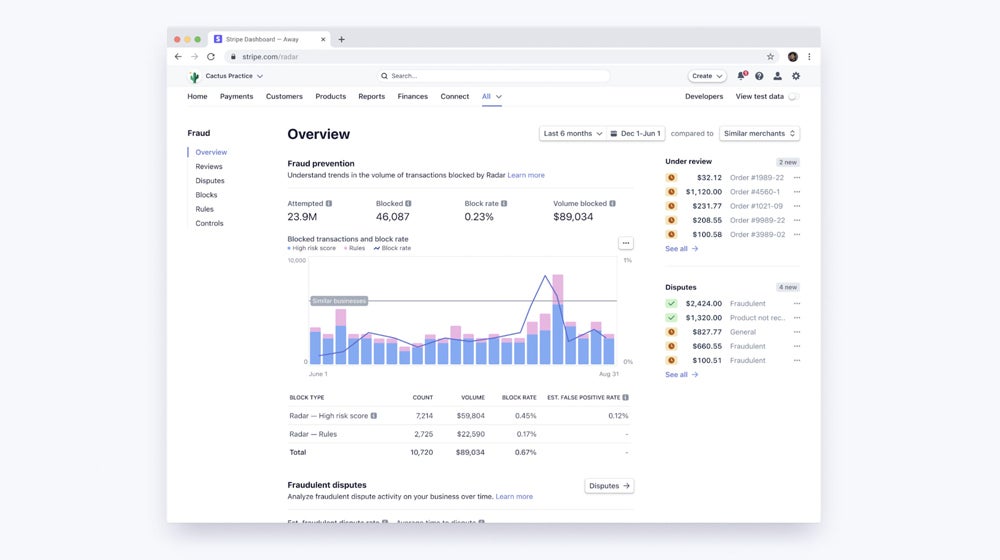
Subscription management and recurring billing
Stripe offers a complete suite of tools for managing recurring payments, including support for subscriptions, automatic invoicing, and flexible billing intervals. These features are essential for SaaS businesses and companies with recurring revenue models. However, it’s important to note that Stripe charges additional fees for using Stripe Billing to manage these recurring payments.
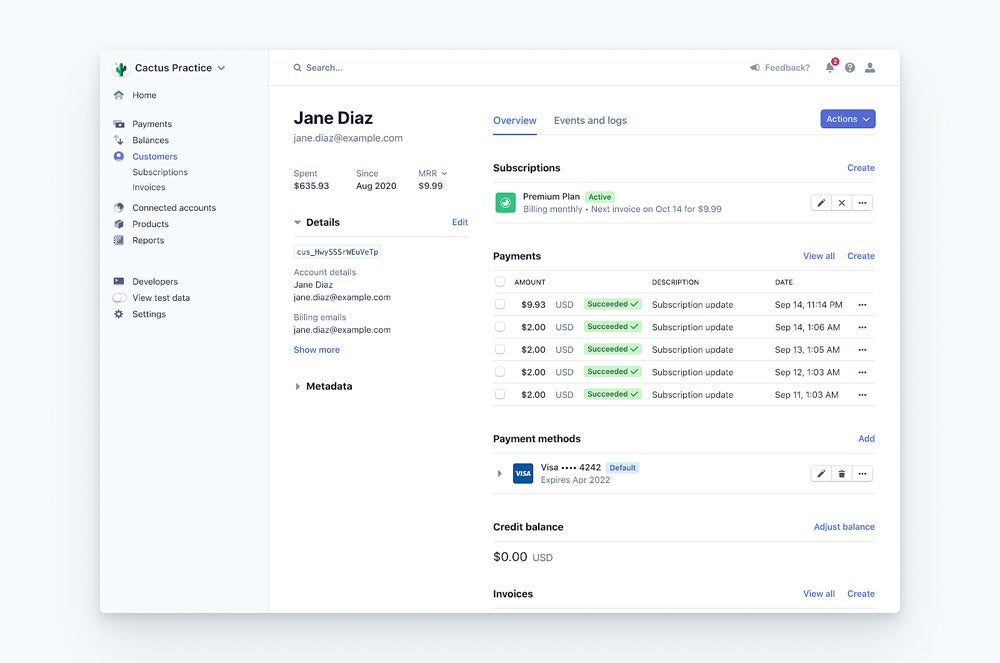
Third-party integrations
While Stripe is known for its developer-friendly tools, it also offers seamless third-party integrations. I think this makes Stripe a viable option even for businesses that do not have the technical know-how for full custom builds because it allows them to seamlessly integrate with popular platforms and services without the need for extensive coding or developer skills. The Stripe App Marketplace has integrations with ecommerce platforms, accounting tools, and CRMs to help streamline business processes. With pre-built connectors and plugins, businesses can easily add payment functionality to their existing systems, making Stripe accessible to non-technical users as well.
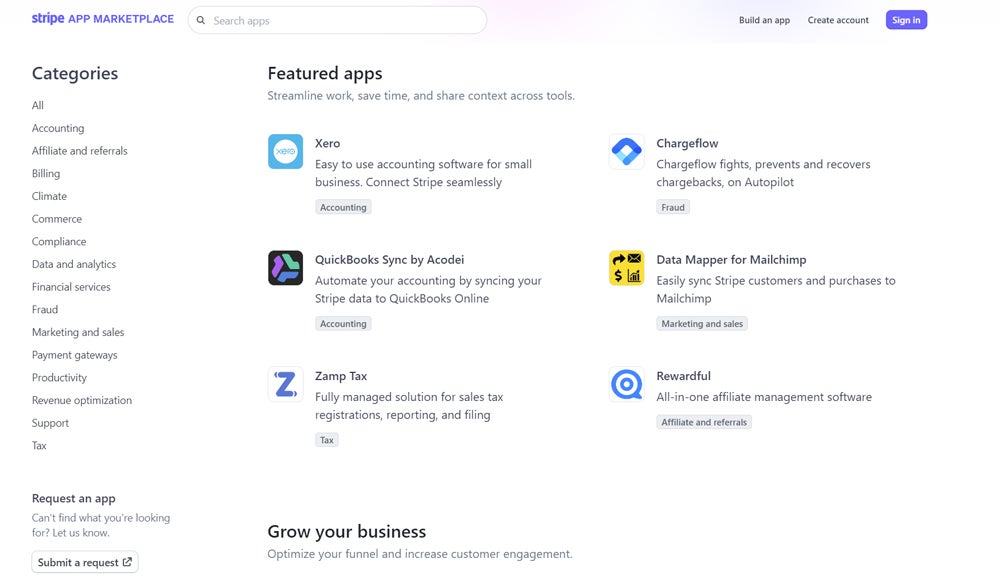
Stripe pros
- Transparent flat-rate pricing.
- Highly customizable API.
- Accepts a wide variety of payment methods.
- Supports over 135 currencies and 46 countries.
- Well-structured and extensive documentation.
- Real-time detailed reporting and analytics.
- Built-in PCI compliance, data encryption, and fraud detection.
- Quick setup with minimal friction.
Stripe cons
- Add-on fees for Stripe Billing and Stripe Invoicing.
- No high-risk merchant support.
- No built-in POS system.
- Can be complex for non-developers.
- Account holds or freezes.
Stripe alternatives
If you think Stripe does not fit your needs, I recommend looking into the following payment processing solutions.
| Monthly fee (starts at) | ||||
| Online processing fee | ||||
| Standout feature |
Square
Square is well-known for its omnichannel payment processing capabilities. It has a free website builder and point-of-sale (POS) system, both of which are not natively available in Stripe. This does not mean you cannot build your own website or have a POS system with Stripe, but you will need to rely on APIs and third-party integrations.
On the other hand, Square offers out-of-the-box solutions for building your own website and using a POS system. Square also does not charge any extra fees for paid invoices or recurring billing. This makes Square a good option for small businesses looking to accept payment in various channels without any extra coding or add-on fees.
Helcim
While Stripe offers transparent, flat-rate pricing, it may not be the most cost-effective, especially for businesses that have high monthly transaction volumes. Helcim, on the other hand, offers not just interchange-plus pricing but also automatic volume discounts. Both are also available through Stripe, but you will need to get in touch with Stripe’s sales team, and it is subject to approval.
Aside from this, Helcim also offers out-of-the-box payment solutions similar to Square. It has a free and simple website builder, as well as a free POS software. I think that for businesses prioritizing costs and solutions requiring less coding, Helcim is an excellent option.
PayPal
Although Stripe is well-known in the payments space, PayPal is a more familiar brand because of its presence in consumer-to-consumer transactions. Although Stripe still offers more powerful APIs for building custom solutions, I would consider PayPal to have one of the most extensive one-click integrations, especially in the ecommerce field.
A good thing to note with PayPal is you do not need to use it as your exclusive payment processor — it is often available as an additional payment option even if you are already using Stripe.
PaymentCloud
I think a big gap with Stripe is its lack of support for high-risk merchants. Businesses considered high-risk are likely to get rejected when they apply for a Stripe account, and it is best to sign up with a high-risk merchant account provider instead, such as PaymentCloud.
PaymentCloud offers versatile solutions, allowing businesses to choose from easy-to-use ones that require less coding to fully customizable options through their partner providers.
Review methodology
This Stripe review is based on a thorough evaluation of its key features, pricing, and overall performance. My assessment included hands-on testing of Stripe’s API, payment processing tools, and Stripe Marketplace to understand its real-world application.
I also took into account Stripe’s fee structure, including its additional costs for features like Stripe Billing. To ensure a well-rounded evaluation, I compared Stripe to other leading payment processors in the market, rating it on criteria such as functionality, scalability, and developer experience.
This article and methodology were reviewed by our retail expert, Meaghan Brophy.
